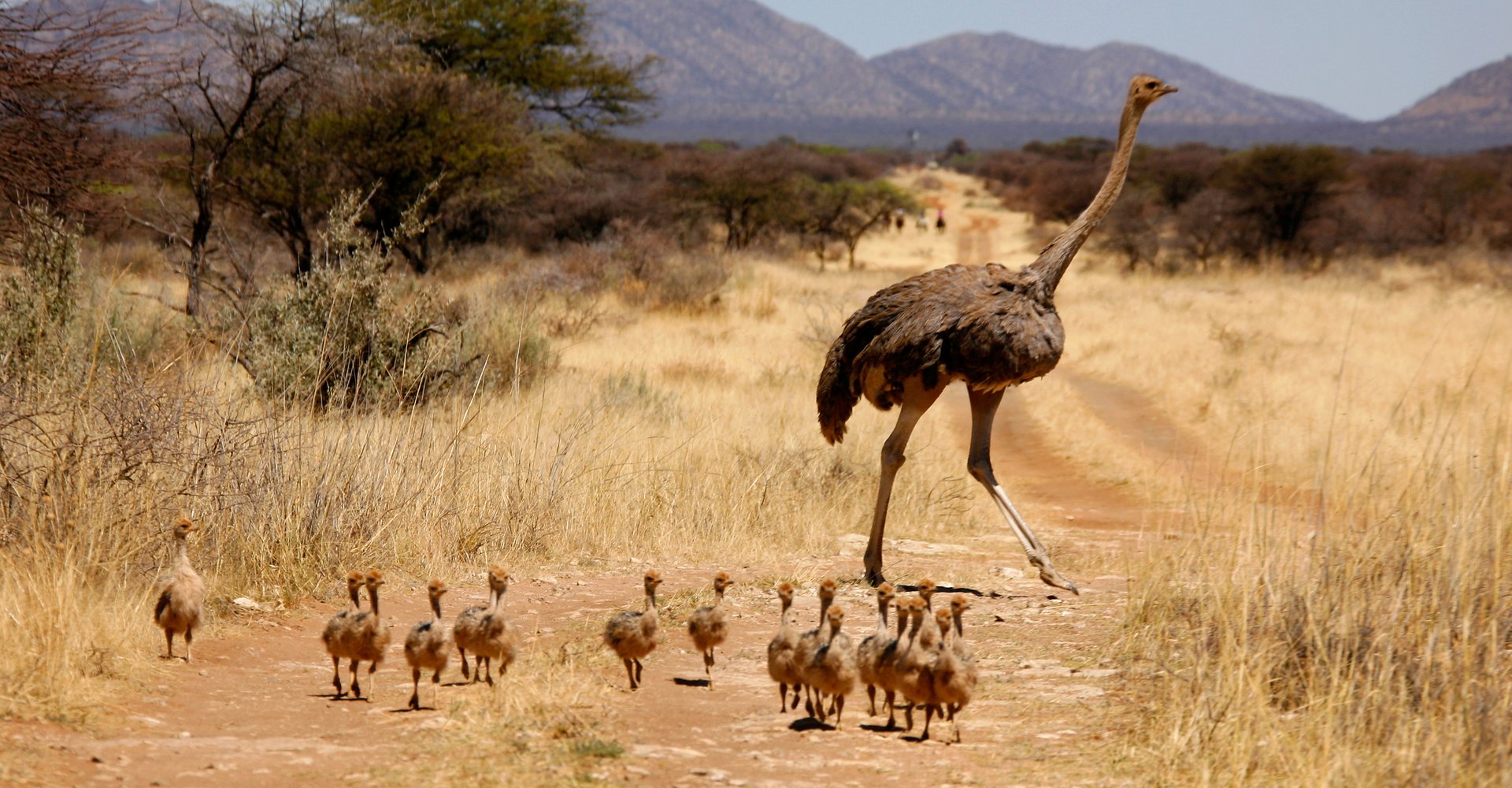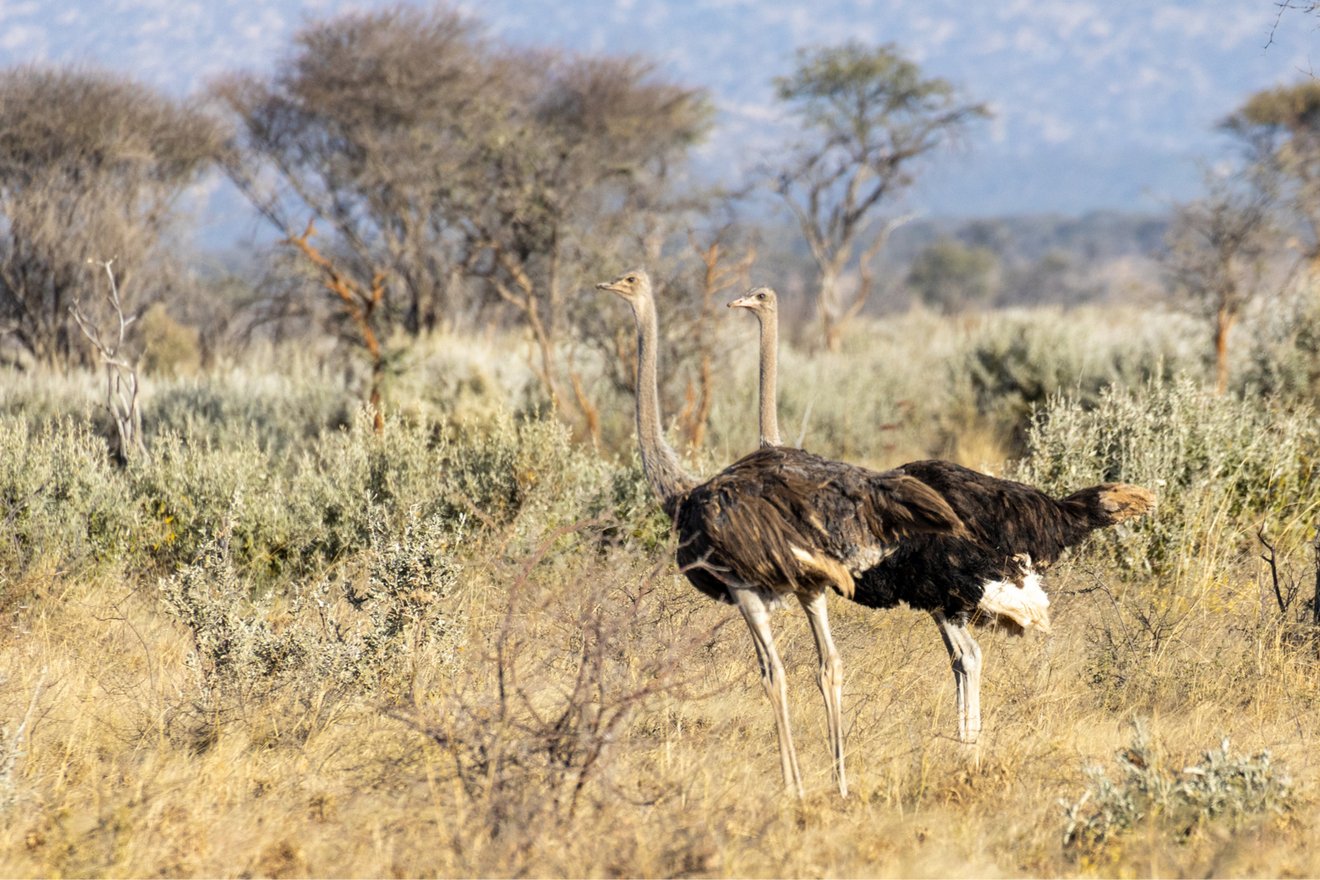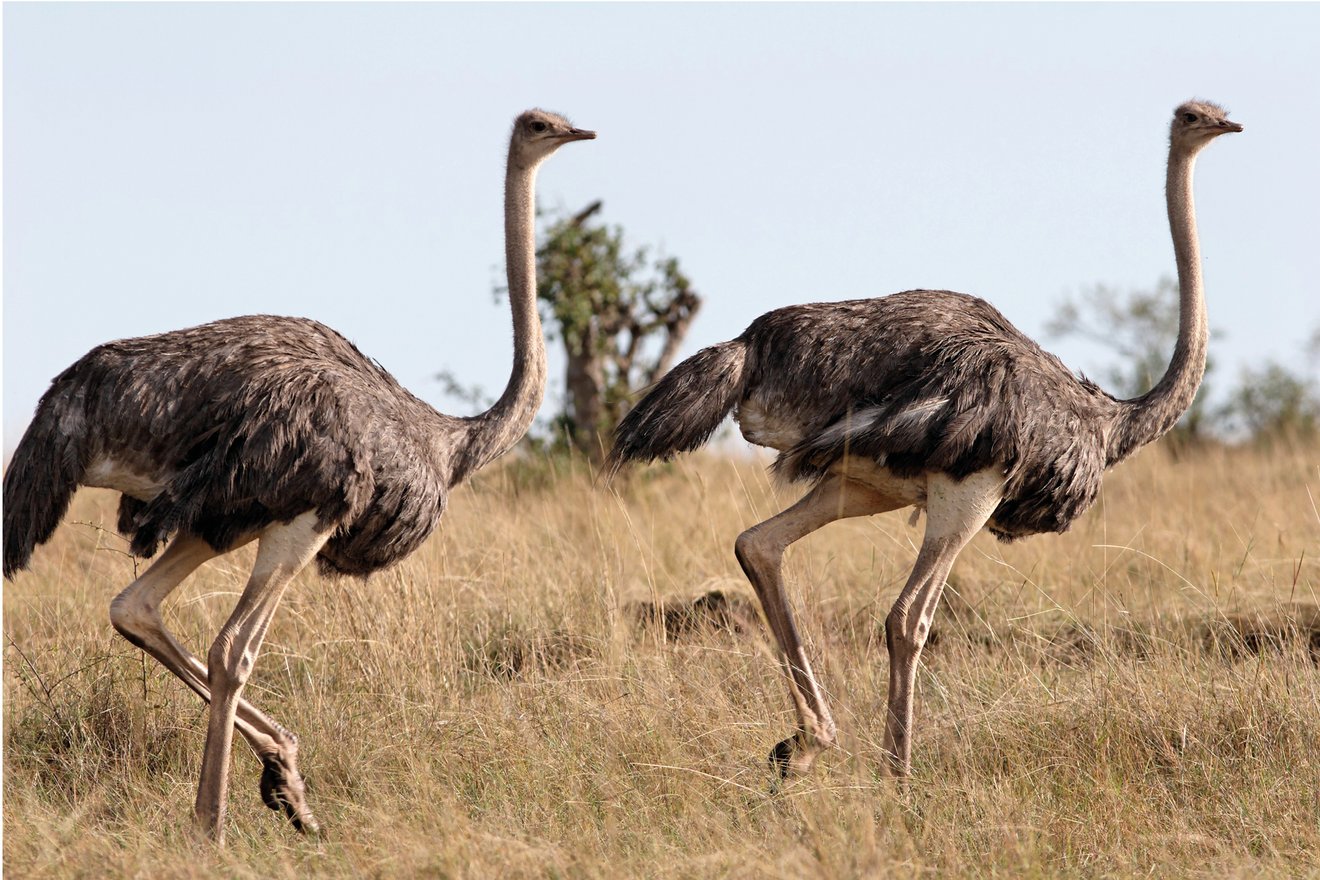The ostrich is the largest bird in the world, capable of reaching speeds up to 70 km/h. It is more of a mount than a singer: the ostrich. Males can grow up to 2.5 meters tall and weigh up to 135 kg. This impressive stature makes the flightless bird a valuable source of meat and leather. In Asia, this led to their extinction. Today, they can only be found in the southern savannas. Despite the persistent myth, the ostrich does not bury its head in the sand.
Flightless Fighter
THE RUNNING GIANTS
WILDLIFE KNOWLEDGE: OSTRICH
One of the ostrich's most impressive survival skills is its incredible speed. With over 70 kilometres per hour, ostriches are among the fastest land animals. This speed allows them to outrun even cheetahs. Their powerful legs enable them not only to run fast but also to deliver strong kicks when threatened. An ostrich's kick is powerful enough to deter even large predators, making it an effective defence mechanism.
Regarding its defence, the ostrich can also rely on its sharp vision. Additionally, their long necks provide an elevated viewpoint, allowing them to keep a watchful eye on their surroundings and take flight if necessary. If surprised, the birds lie low to the ground to avoid detection. Thanks to their size, powerful legs, and a sharp claw on one of their two toes, the largest living birds in the world have a good chance of emerging victorious in a confrontation with a predator and in defending their nest.
Although many people underestimate the intelligence of ostriches, they have been observed employing deceptive tactics to lure predators away from their nests. For instance, they sometimes feign injury to protect their eggs and chicks. Moreover, ostriches appear to learn from their experiences and adjust their behaviour accordingly. An ostrich that encounters a predator can change its future behaviour to avoid similar situations.
Fascinating Reproduction of Ostriches
The reproduction of these running birds is particularly intriguing. Although a dominant male mates with several females, he always chooses a primary hen in a spectacular courtship ritual. After mating, the primary hen selects one of several shallow nest pits that the rooster has dug into the ground and begins laying about 8-10 eggs in the flock's nest. Subsequently, the secondary hens each lay 2-5 smaller eggs in the communal nest, arranged in a circle around the primary hen's eggs. This arrangement of the eggs helps protect the dominant hen's eggs in the event of nest predation. Often, a clutch includes up to 80 eggs, which are initially incubated communally, but later only by the primary pair of the flock.
Fun Fact
Even though ostrich eggs, weighing nearly 2 kg and with a diameter of up to 15 centimetres, appear enormous and are among the largest eggs in the world, they are actually the smallest in relation to the body size of the fully-grown bird.




